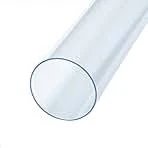Dic . 15, 2024 15:15 Back to list
40mm waste pipe fittings
Understanding 40mm Waste Pipe Fittings A Comprehensive Guide
Waste pipe fittings are an integral part of plumbing systems, enabling the safe and efficient disposal of wastewater from residential and commercial spaces. Among the various sizes and types of waste pipe fittings available, the 40mm waste pipe fittings are particularly popular due to their versatility and ease of installation. This article aims to shed light on the importance, components, and applications of 40mm waste pipe fittings.
What are 40mm Waste Pipe Fittings?
40mm waste pipe fittings refer to plumbing components designed to connect, redirect, or terminate waste pipes with a diameter of 40 millimeters. These fittings are typically made from durable materials such as PVC, ABS, or polypropylene, which resist corrosion and are low-maintenance. They play a crucial role in the drainage systems of sinks, baths, showers, and toilets, ensuring the safe and effective removal of wastewater.
Key Components of 40mm Waste Pipe Fittings
1. Pipes The primary component is the 40mm waste pipe itself, which transports wastewater from fixtures to the main drainage system. These pipes can be found in various lengths and are available in different materials depending on the application.
2. Elbow Fittings These fittings allow changes in the direction of the pipework, typically at a 90 or 45-degree angle. Elbow fittings maximize the efficiency of the drainage system while minimizing bends and potential blockages.
3. Tees Tee fittings are used to connect three sections of pipe, allowing for branching off from the main waste line. This is particularly useful in creating complex plumbing layouts when multiple fixtures are connected to a single drain line.
4. Couplings and Adapters Couplings are used to join two pieces of pipe together, while adapters allow for connection between different diameters or types of pipe materials. These components are essential for maintaining the integrity of the plumbing system.
5. Traps A waste trap is a fitting designed to prevent sewer gases from entering a building while allowing wastewater to flow through. P-traps are a common design, which retains some water to create a seal against unwanted odors.
6. Access Fittings These include access points for inspection and cleaning, which are crucial for maintaining the health of the plumbing system and preventing blockages.
40mm waste pipe fittings

Installation and Maintenance
Installing 40mm waste pipe fittings is generally a straightforward process, but it requires careful planning and execution. Proper sealing with solvent cement is crucial to ensure there are no leaks. When installing, it’s important to adhere to local building codes and regulations, which dictate the minimum standards for plumbing installations.
Regular maintenance is vital to keep the waste system functioning properly. Homeowners should periodically inspect visible pipe sections for signs of leaks or corrosion. Additionally, using enzyme-based drain cleaners can help prevent build-up and blockages within the system.
Applications of 40mm Waste Pipe Fittings
40mm waste pipe fittings find extensive application in various areas
- Residential Plumbing In homes, 40mm fittings are commonly used for kitchen sink drains, bathroom basins, bathtubs, and washing machines. Their size is often ideal for everyday household wastewater.
- Commercial Buildings In commercial applications, these fittings handle wastewater from sinks, dishwashers, and similar appliances, ensuring a reliable drainage system.
- Industrial Use 40mm fittings also have applications in smaller-scale industrial processes that require efficient wastewater removal without the need for larger piping systems.
Conclusion
In conclusion, 40mm waste pipe fittings are vital components of modern plumbing systems. Their ability to connect various elements of the waste disposal system makes them indispensable in both residential and commercial settings. Understanding the different types of fittings, their installation, and maintenance practices can help ensure an efficient and trouble-free plumbing system. By investing in quality materials and adhering to best practices, property owners can safeguard their plumbing infrastructure and maintain a safe, sanitary environment.
-
HDPE Natural Sheet: Durable, Food-Grade & Versatile Plastic Solutions
NewsAug.27,2025
-
Durable Glossy PVC Rigid Sheet | Premium High-Shine Panels
NewsAug.26,2025
-
Durable PP Rigid Sheet: Lightweight, Chemical Resistant Solutions
NewsAug.21,2025
-
PVC Grey Sheet for Extraction: Chemical Resistant & Durable
NewsAug.19,2025
-
Durable PVC Pipe Fittings for Plumbing & Irrigation Needs
NewsAug.18,2025
-
HDPE Steel Belt Reinforced Spiral Corrugated Pipe | High Strength
NewsAug.17,2025

